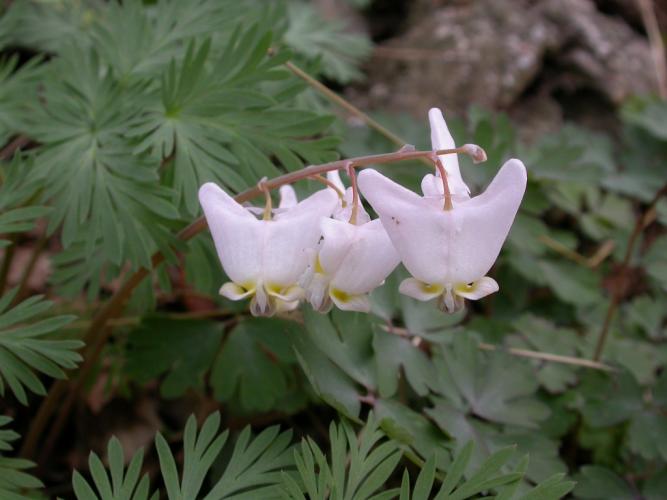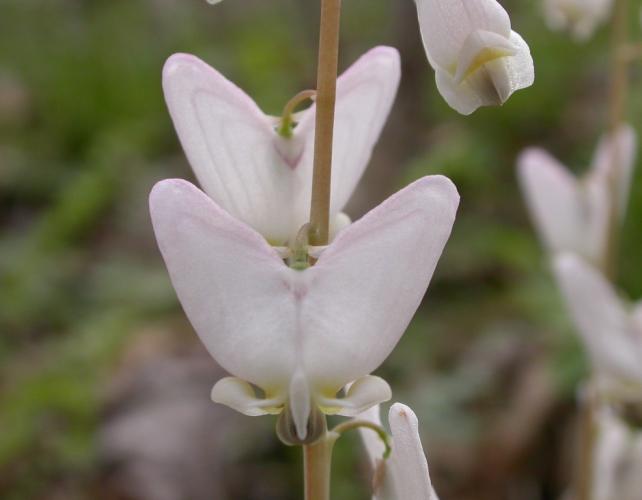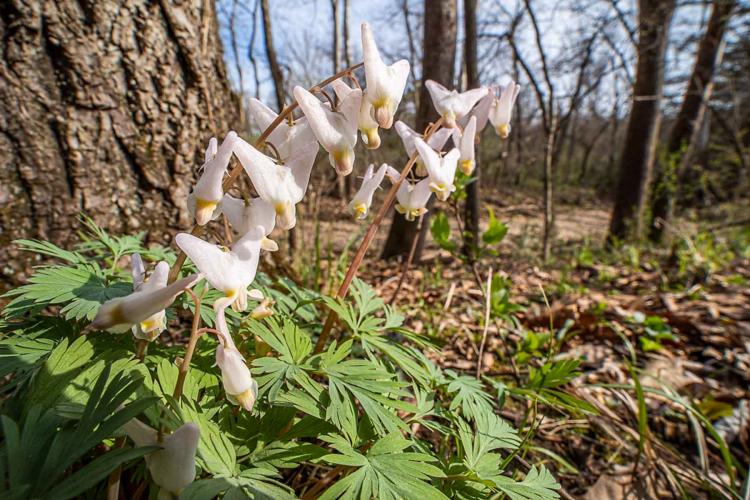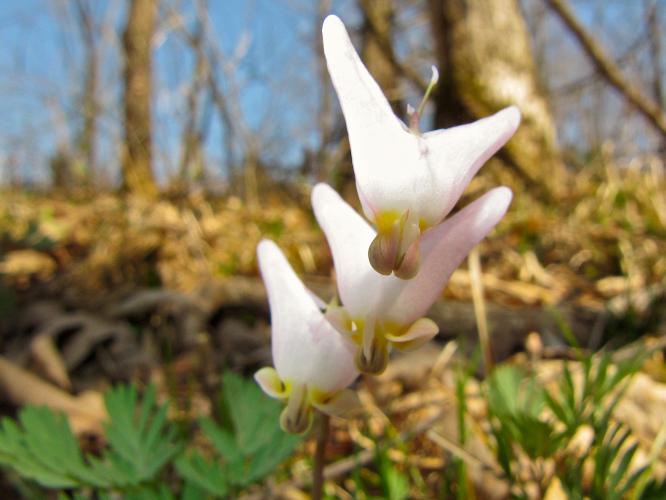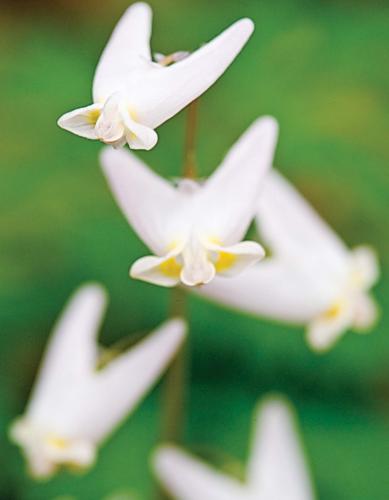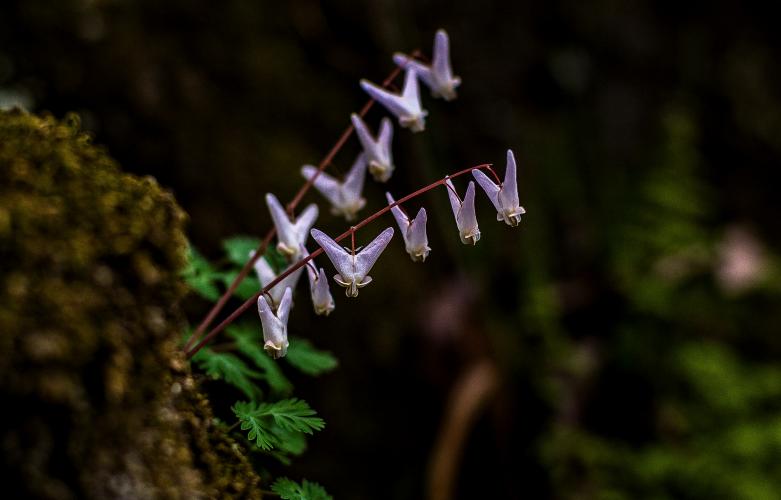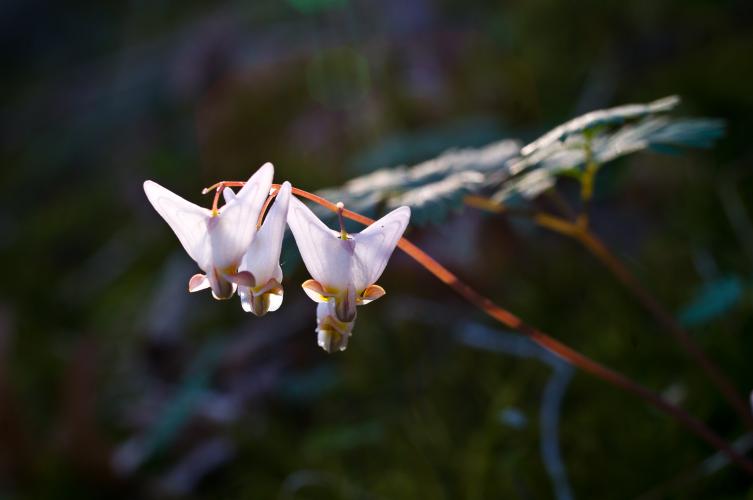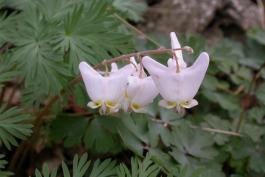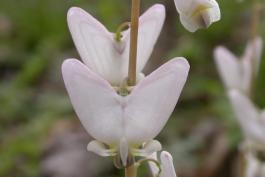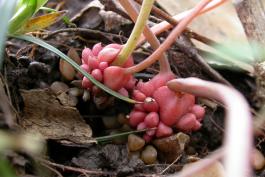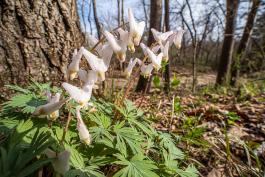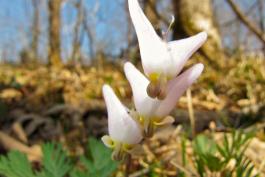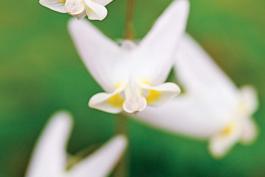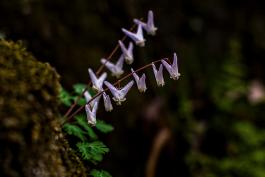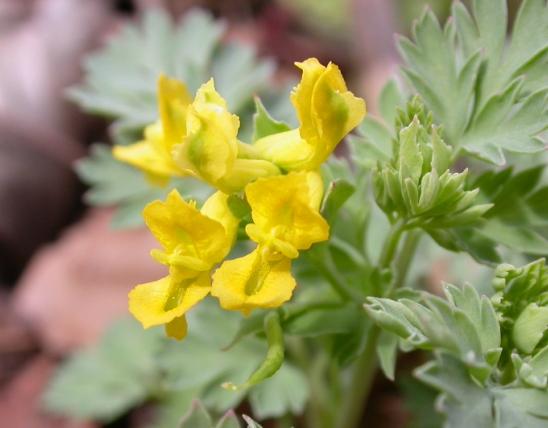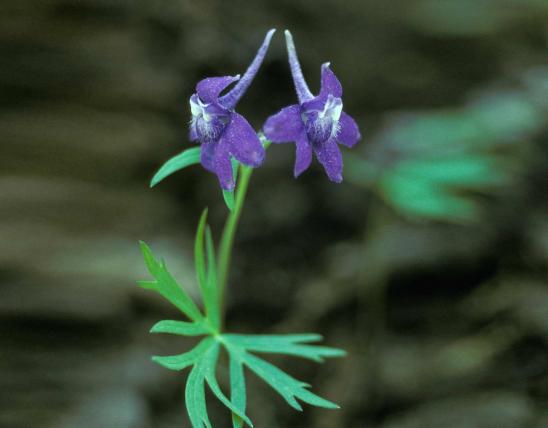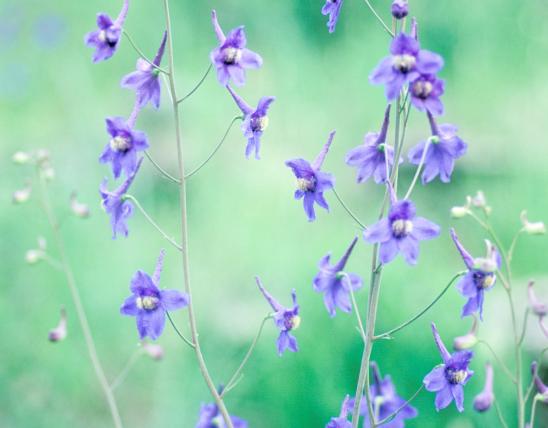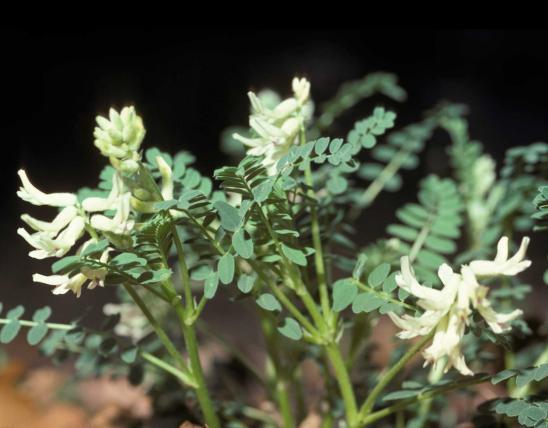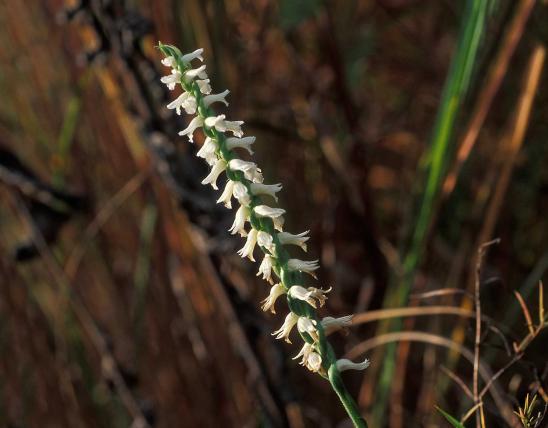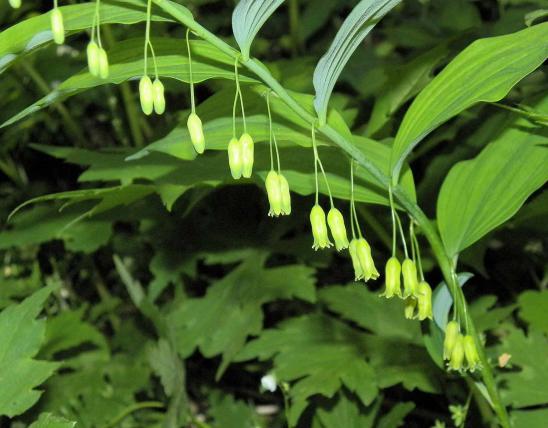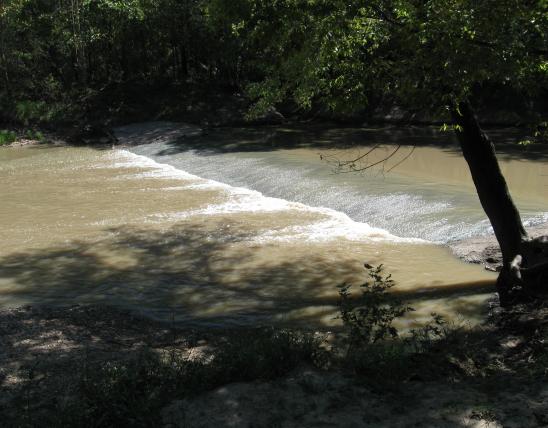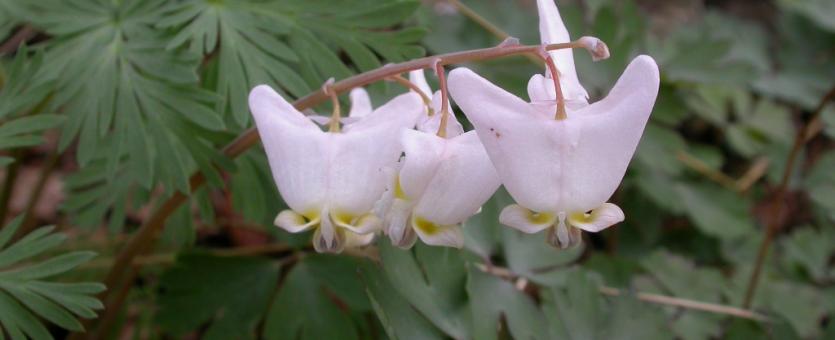
Dutchman’s breeches is an odd-looking spring wildflower that resembles a series of miniature white knee breeches hanging on a line. Flowers 4–10 per stalk, stalk leafless, often leaning; flowers white or faint pink, with 2 diverging spurs (the “breeches”). Each flower is attached to the slender stem between the 2 spurs. The flowers do not produce a fragrance. Blooms March–May. Leaves on long petioles from base of plant, compound into 3 sections, finely divided, fernlike, bluish green. Rootstocks with small clusters of tuberlike bulblets, pink, sometimes white.
Similar species:
- Squirrel corn (D. canadensis) is scattered and rare in our state, mostly in the northern half. It has greenish-white, heart-shaped flowers with short, rounded spurs, and it smells like hyacinths.
- Bleeding heart (D. spectabilis) is a familiar garden plant that can escape from cultivation or persist at old home sites.
- Missouri's four species of Corydalis have foliage that resembles Dutchman's breeches, and they also emerge in early spring. The flowers, however, are very different.
Height: to about 12 inches.
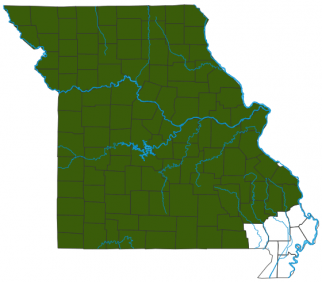
Statewide, except for the Southeast Lowlands.
Habitat and Conservation
Rich slopes of woods, bottomlands, streamsides; demands excellent drainage and humus-rich soil.
Status
Native Missouri wildflower.
Twenty-first-century scientists have been folding all the members of the fumitory family (Fumariaceae; also called the bleeding heart family) into the poppy family (Papaveraceae), and doing away with the idea of a separate family for fumitories. As a result, you may encounter varying family classifications for Dutchman's breeches and its relatives.
Human Connections
This plant had many historic medicinal uses among Native Americans and pioneers, but it is apparently toxic and can cause skin rashes in some people. Today, it is most popular as a dainty spring wildflower. It blooms early and with its unusual flower form, is easy to identify; no wonder it's a favorite.
Ecosystem Connections
This species has a fascinating relationship with ants: The seeds of Dutchman’s breeches have a fleshy part that ants relish. Ants harvest the seeds, carry them to their nests, and eat the edible parts. The now-dispersed seeds can then germinate in the rich soil of an ant nest.
